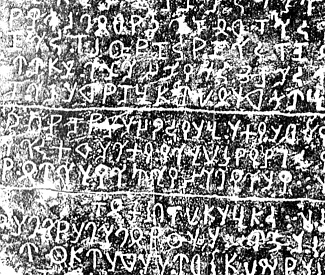

Zitierweise / cite as:
Payer, Alois <1944 - >: Quellenkunde zur indischen Geschichte bis 1858. -- 7. Bildträger. -- 2. Zum Beispiel: Illustrationen zur Gheraṇḍasaṃhitā, vor 1886. -- Fassung vom 2008-07-07. -- http://www.payer.de/quellenkunde/quellen072.htm
Erstmals publiziert in:
Schmidt, Richard <1866 - 1939>: Fakire und Fakirtum im alten und modernen Indien : Yoga-Lehre und Yoga-Praxis nach den indischen Originalquellen / von Richard Schmidt. - Wien : Amonesta, [1907]. - 291 S. : Ill. ; 21 cm.
Die Abbildungen stammen von einem Yogin und wurden 1886 vom Tübinger Indologen Richard Garbe (1857 - 1927) in Benares erworben.
Erstmals hier publiziert: 2008-07-07
Überarbeitungen:
Anlass: Lehrveranstaltung FS 2008
©opyright: Public domain
Dieser Text ist Teil der Abteilung Sanskrit von Tüpfli's Global Village Library
Falls Sie die diakritischen Zeichen nicht dargestellt bekommen, installieren Sie eine Schrift mit Diakritika wie z.B. Tahoma.
"Gheraṇḍasaṃhitā (Sanskrit धेरंड संहिता Gheraṇḍa saṃhitā) meaning “Gheranda's collection” is one of the three classic texts of haṭhayoga (the other two being the Haṭhayogapradīpikā and the Śivasaṃhitā). It is a late 17th century text and is considered to be the most encyclopedic of the three classic texts on hatha yoga. Gheraṇḍasaṃhitā is a manual of yoga taught by Gheranda to Chanda Kapali. Unlike other hatha yoga texts, the Gheranda Samhita speaks of a sevenfold yoga:
- Ṣaṭkarma for purification
- Āsana for strengthening
- Mudrā for steadying
- Pratyahāra for calming
- Prāṇāyāma for lightness
- Dhyāna for perception
- Samādhi for isolation
The text itself follows this division in seven chapters, and has a focus upon the ṣaṭkarmas, thus this text is sometimes said to describe ghaṭastha yoga. For instance, the Yoga Sūtras of Patañjali describes an eightfold path (yama and niyama instead of ṣaṭkarma and mudrā, and addition of dhāraṇā). The closing stanzas on samādhi teach different methods than those described by Patañjali."
[Quelle: http://en.wikipedia.org/wiki/Gherandasamhita. -- Zugriff am 2008-07-06]
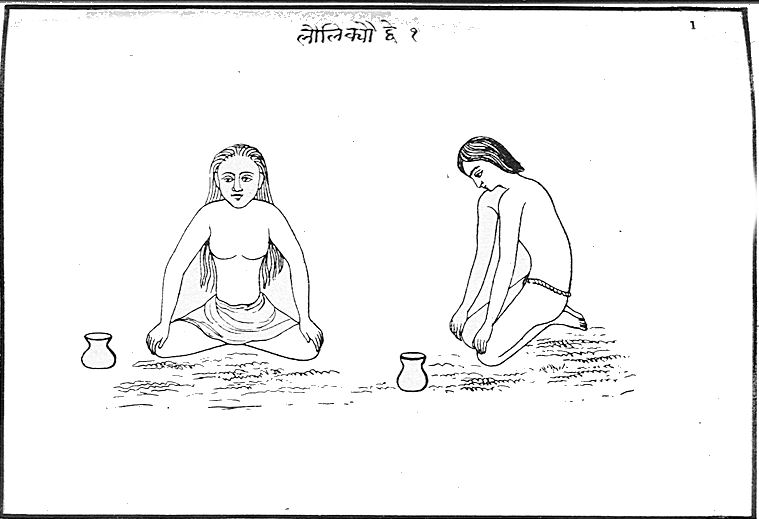
Abb.: Laukikyau
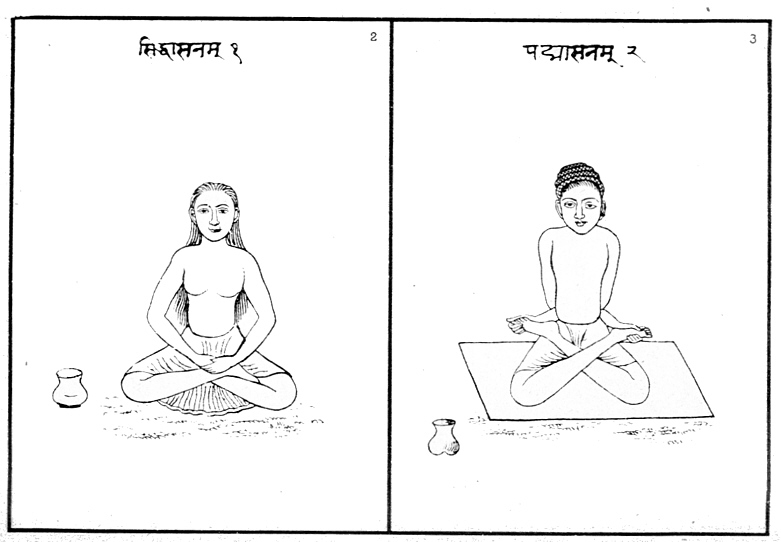
Siddhāsana, Padmāsana
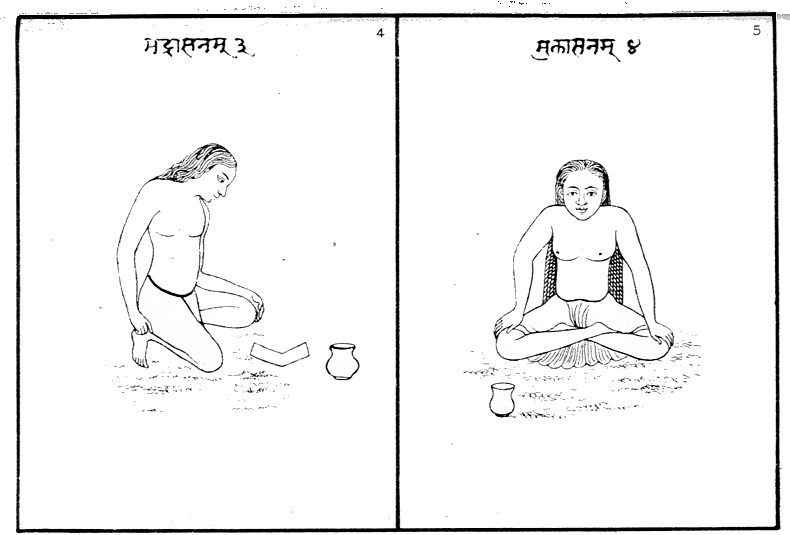
Bhadrāsana, Muktāsana
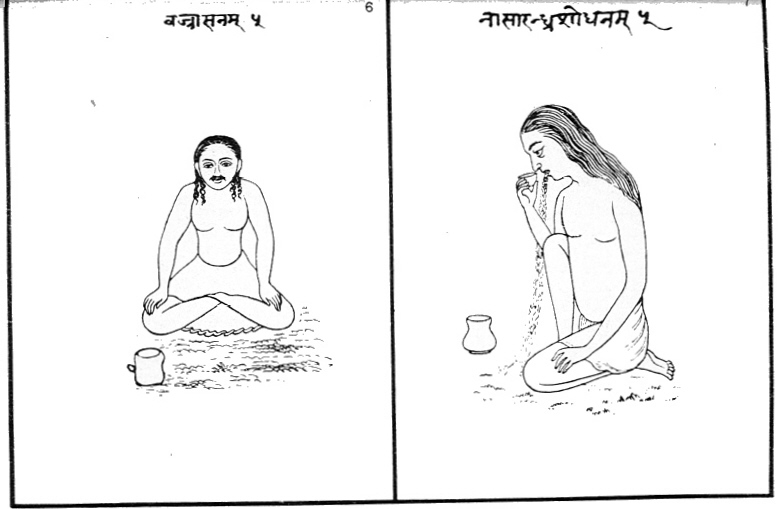
Vajrāsana, Nāsārandhraśodhana
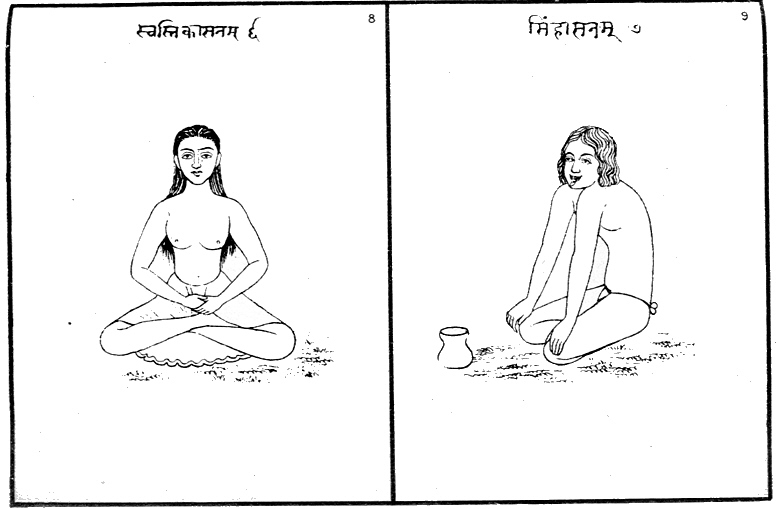
Svastikāsana, Siṃhāsana
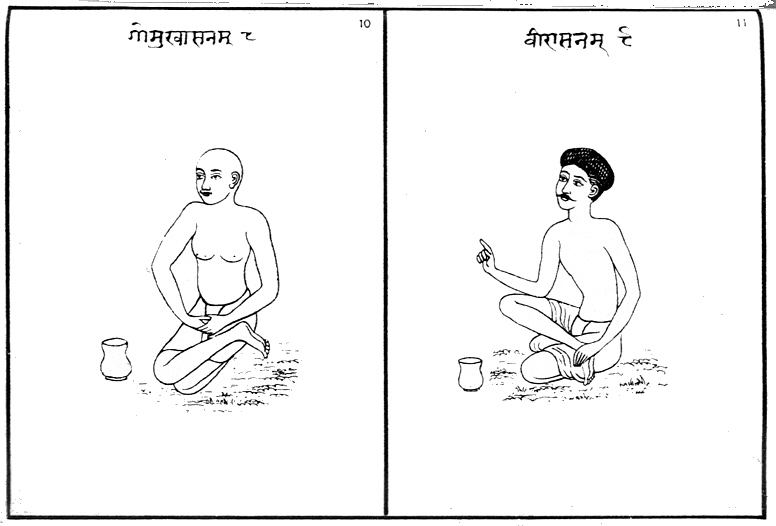
Gomukhāsana, Vīrāsana
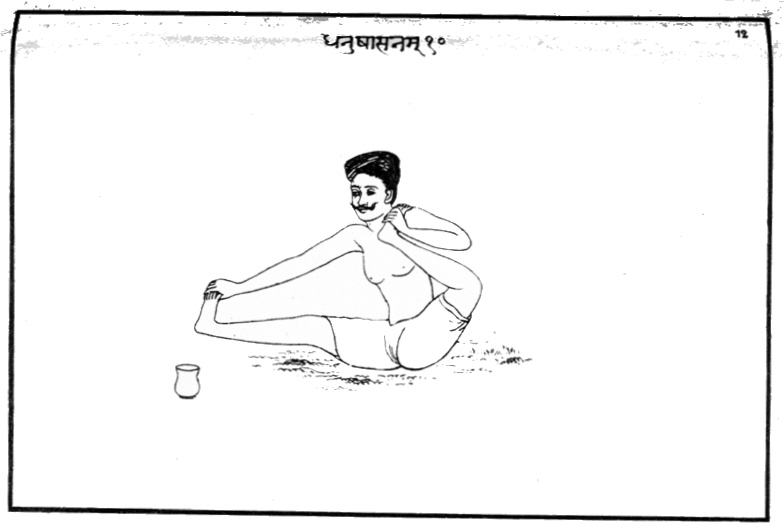
Dhanuṣāsana
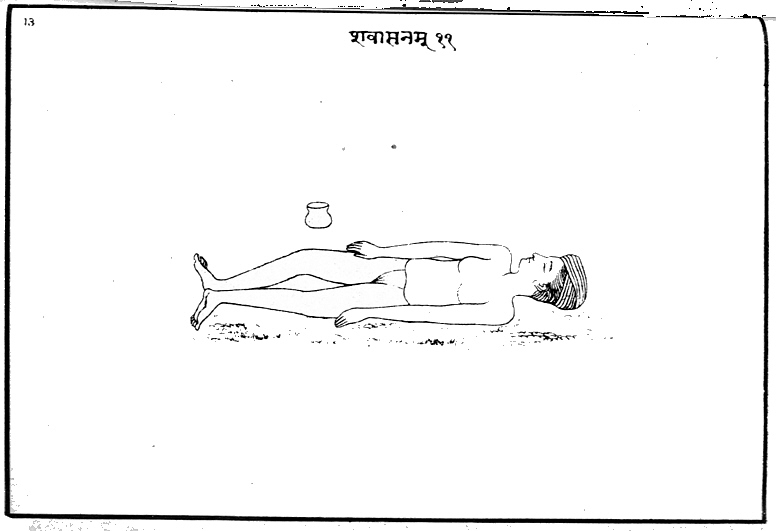
Śavāsana
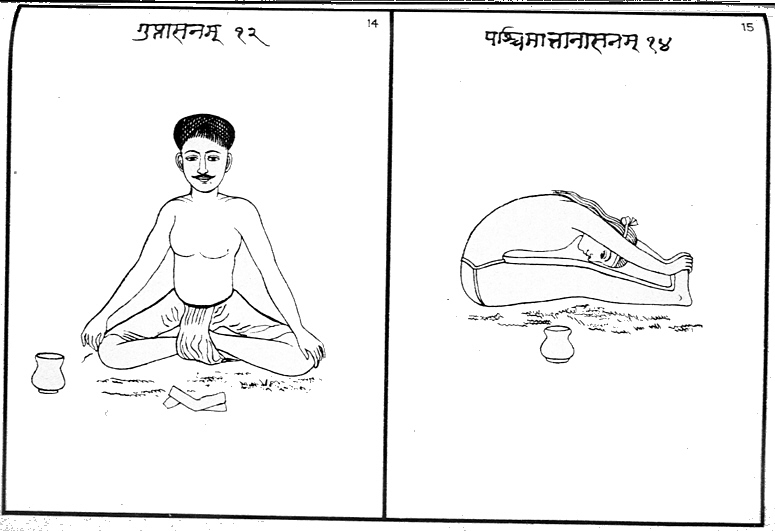
Guptāsana, Paścimāntānāsana
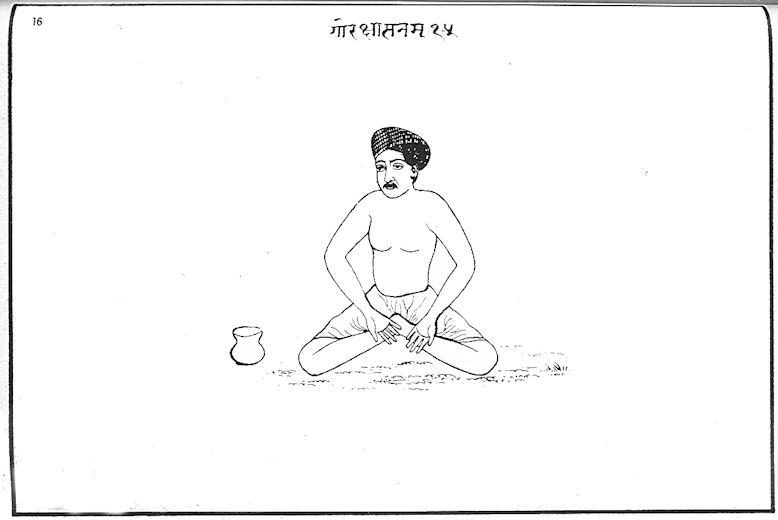
Gorakāṣana
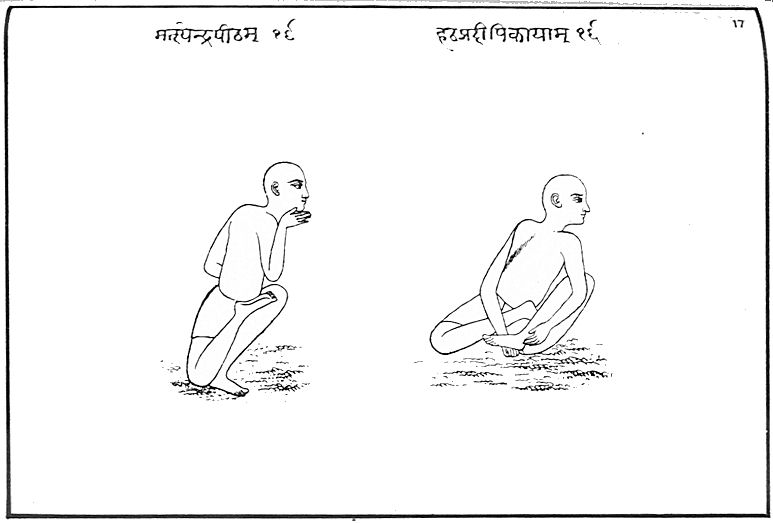
Matsyendrapīṭha
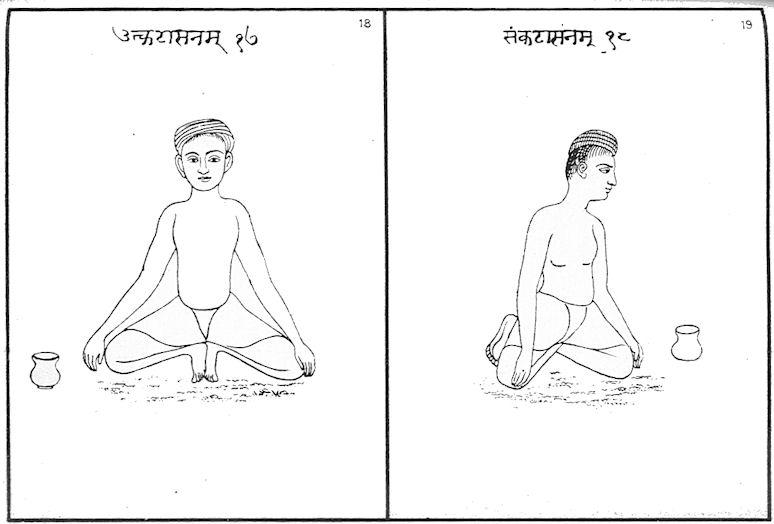
Utkaṭāsana, Saṃkaṭāsana
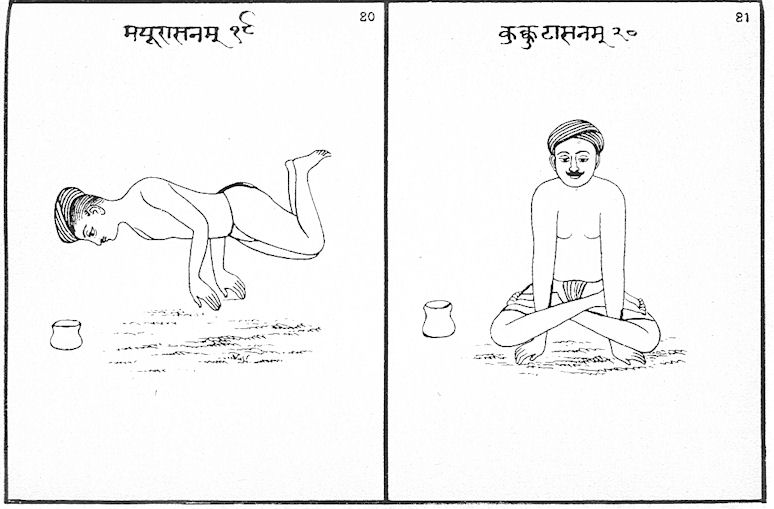
Mayūrāsana, Kukkuṭāsana
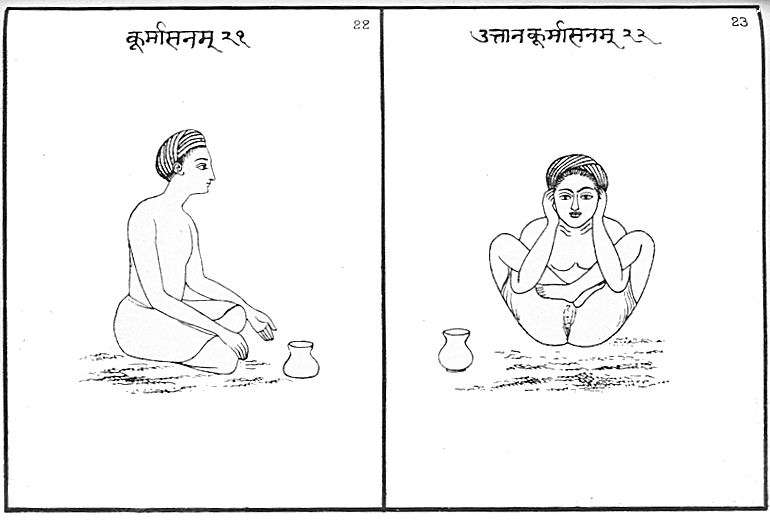
Kūrmāsana, Uttānakūrmāsana
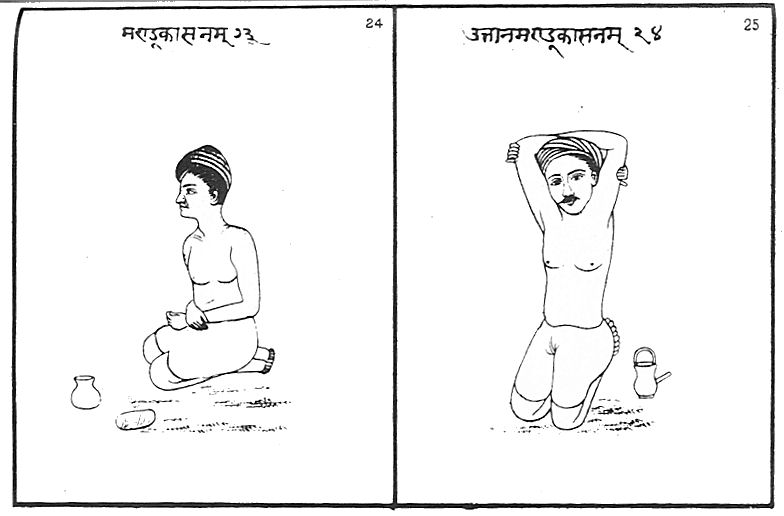
Maṇḍūkāsana, Uttānamaṇḍūkāsana
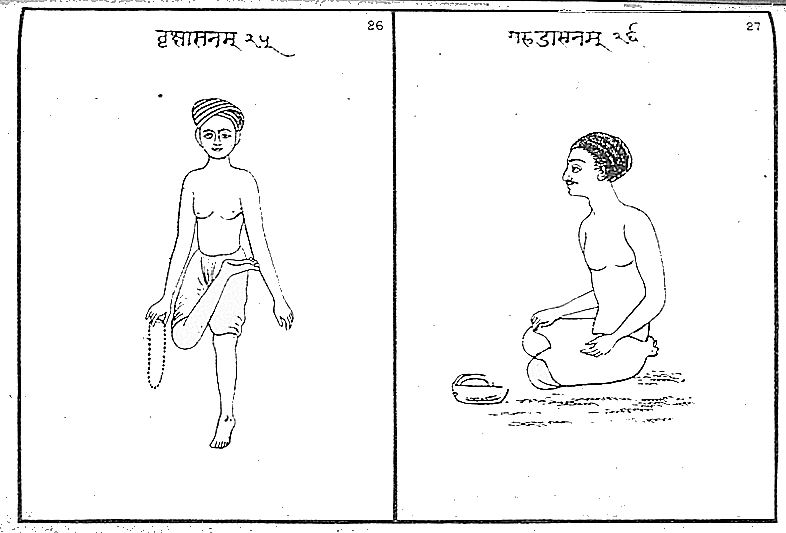
Vṛkṣāsana, Garuḍāsana
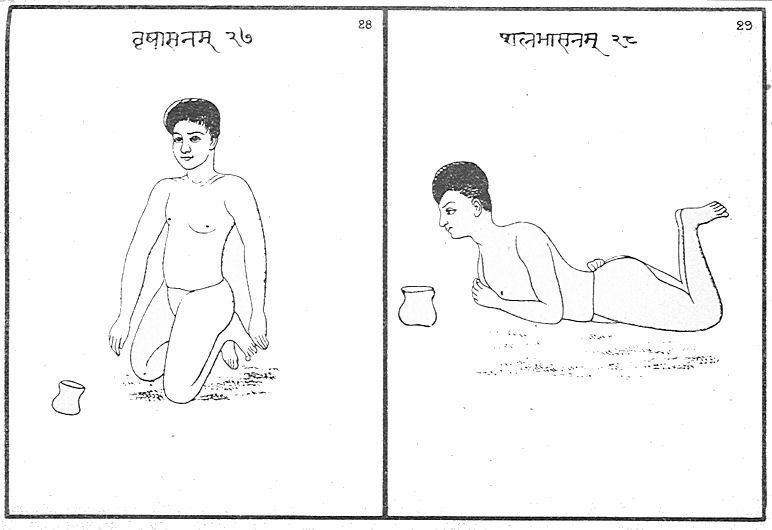
Vṛṣāsana, Śalabhāsana
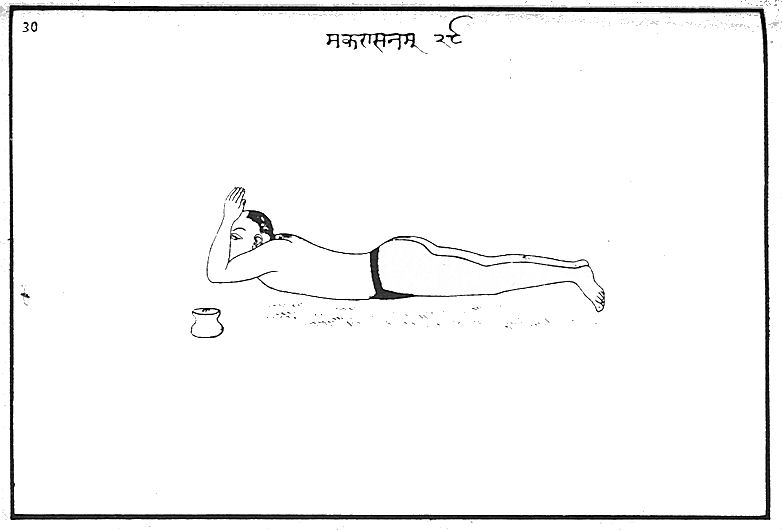
Makarāsana
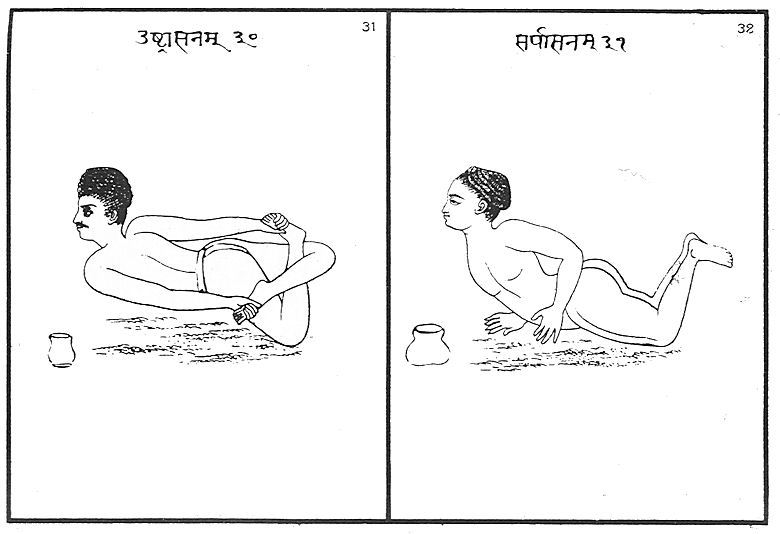
Uṣṭrāsana, Sarpāsana
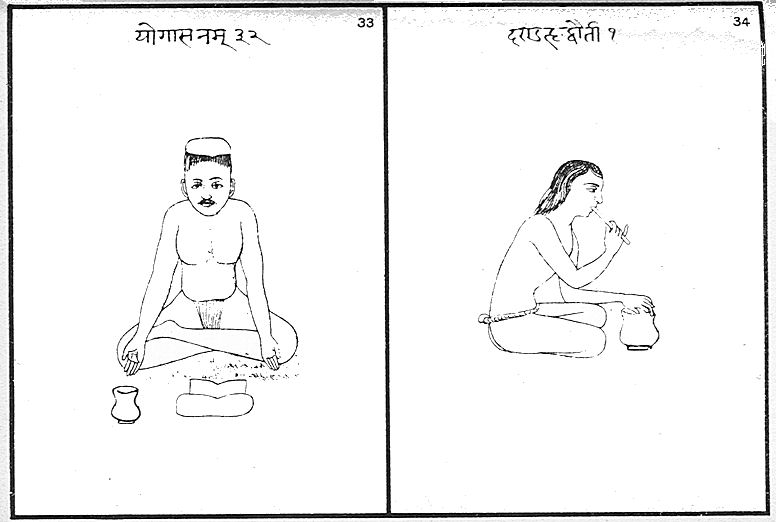
Yogāsana, Daṇḍahṛddhautī
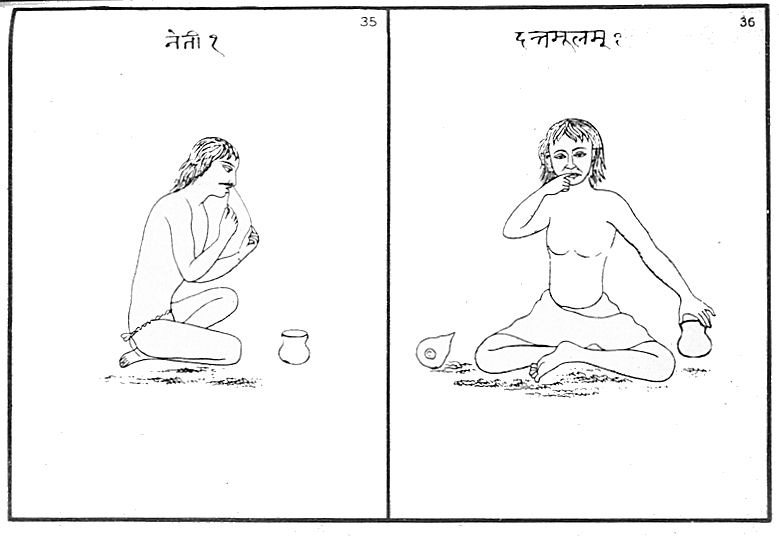
Netī, Dantamūla
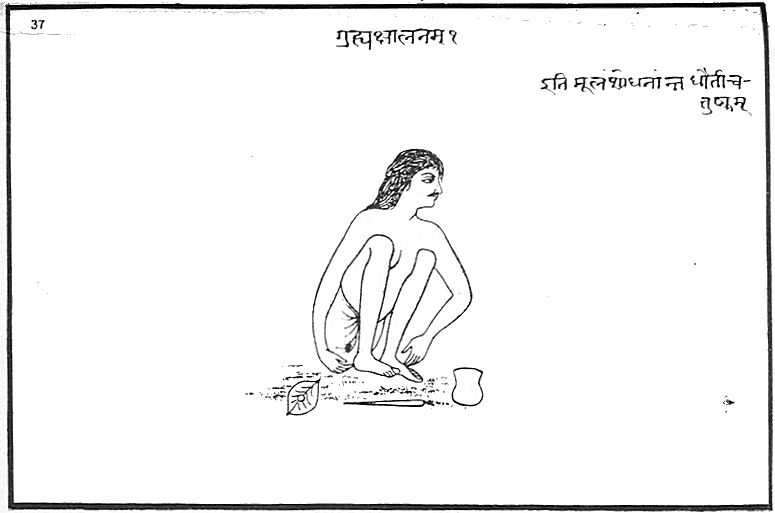
Guhyakṣālana
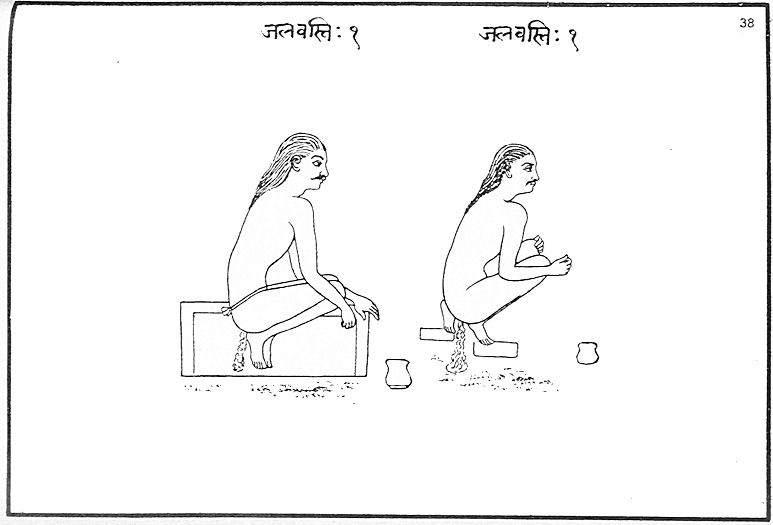
Jalabasti
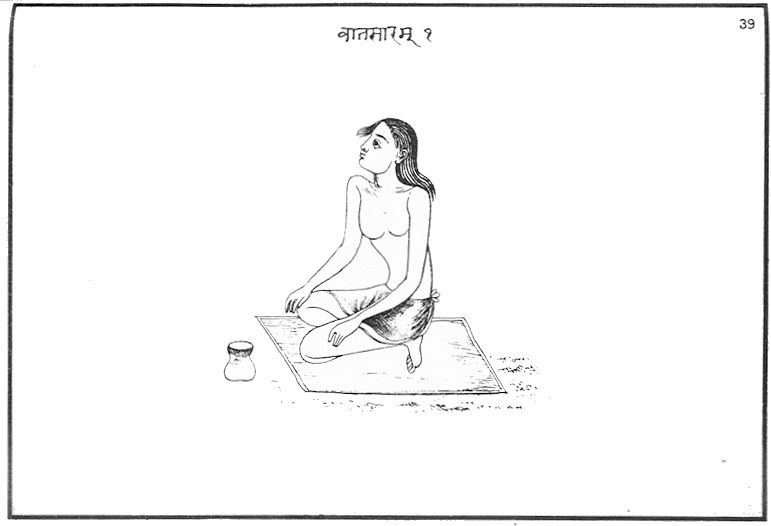
Vātasāra
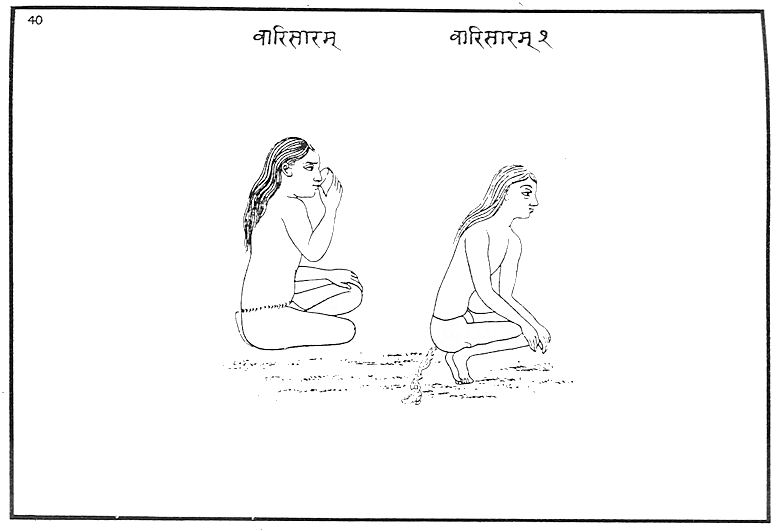
Vārisāra
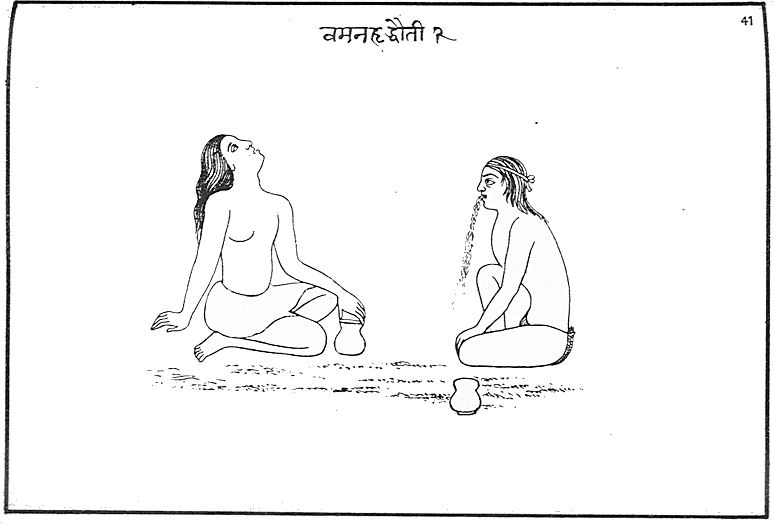
Vamanahṛddhautī

Nabhāmudrā, Uḍḍiyānamudrā
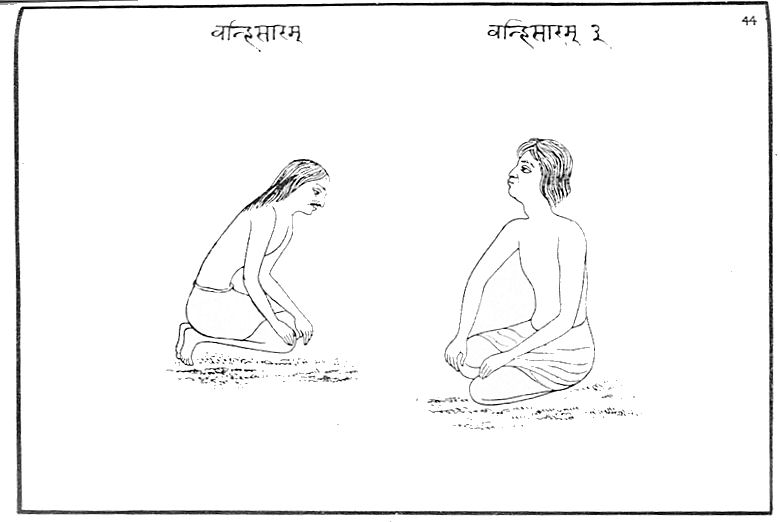
Vahnisāra
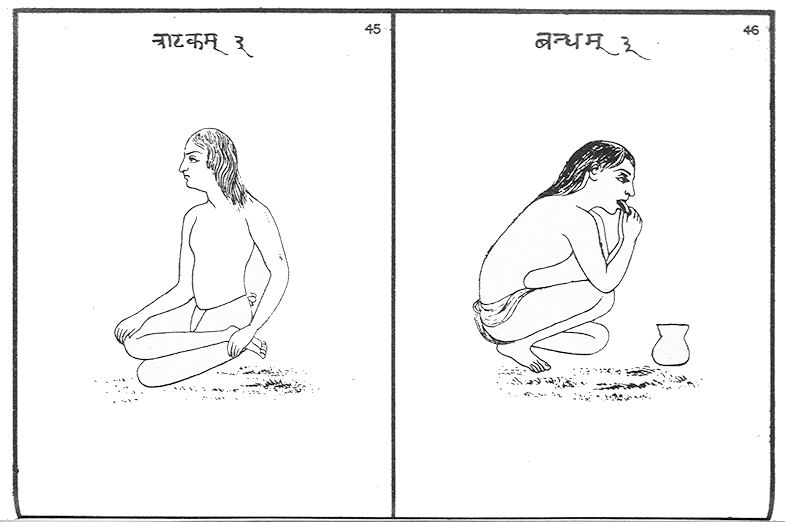
Trāṭaka, Bandha
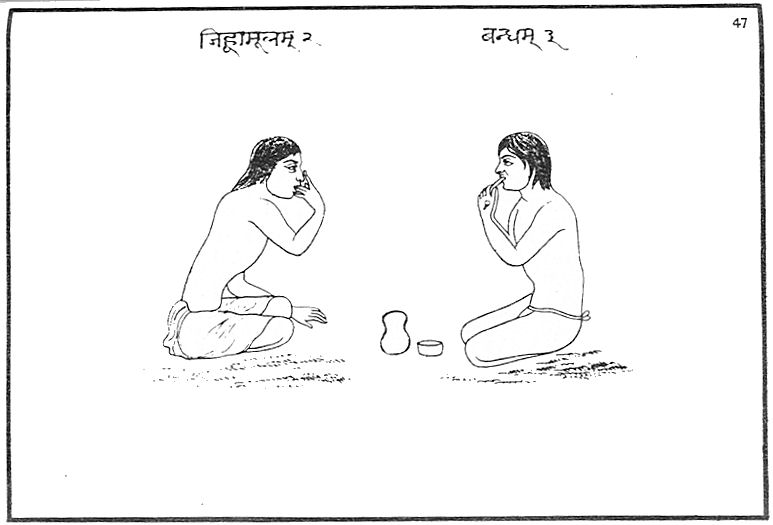
Jihvāmūla, Bandha
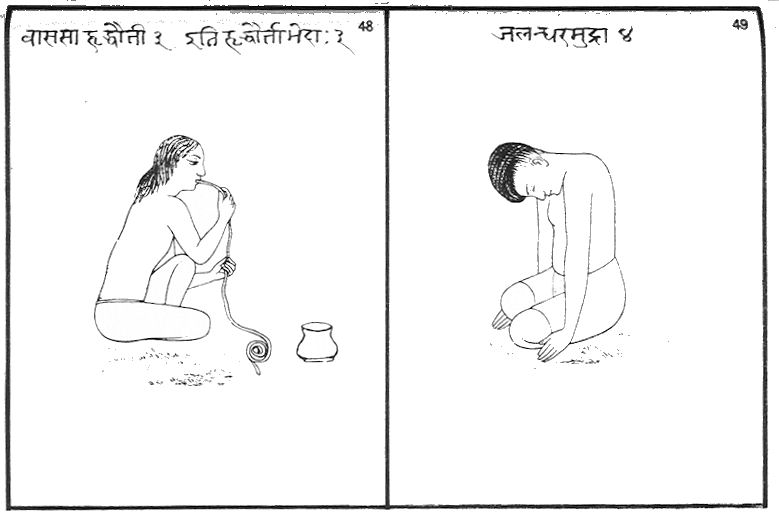
Vāsasā Hṛddhautī, Jalandharamudrā
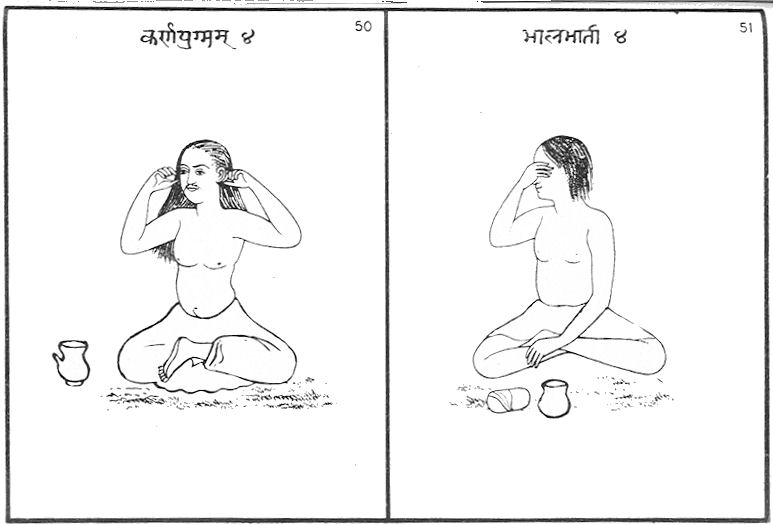
Karṇayugma, Bhālabhātī
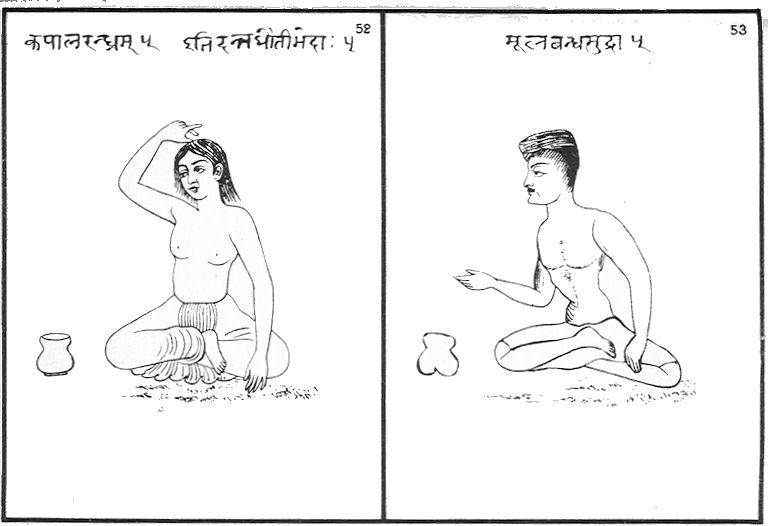
Kapālarandhra, Mūlabandhamudrā
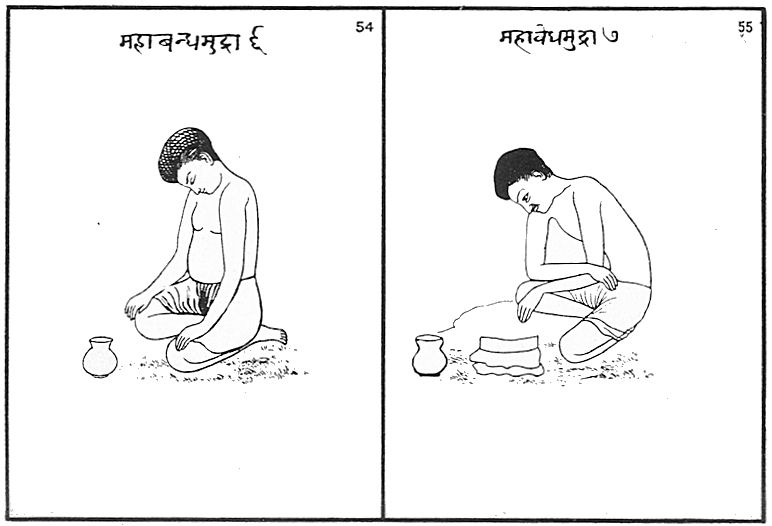
Mahābandhamudrā, Mahāvedhamudrā
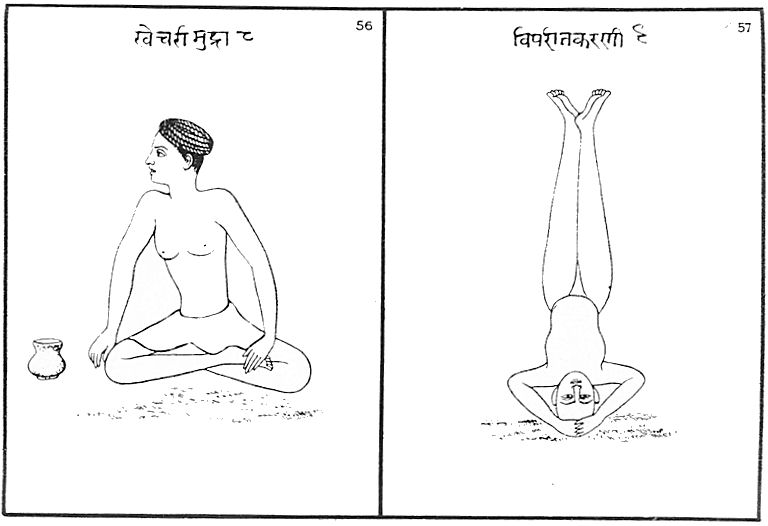
Khecarīmudrā, Viparītakaraṇī
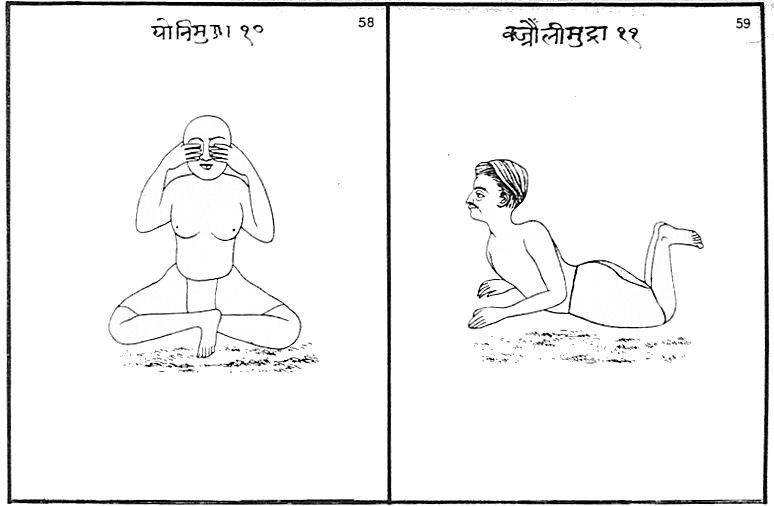
Yonimudrā, Vajraulīmudrā
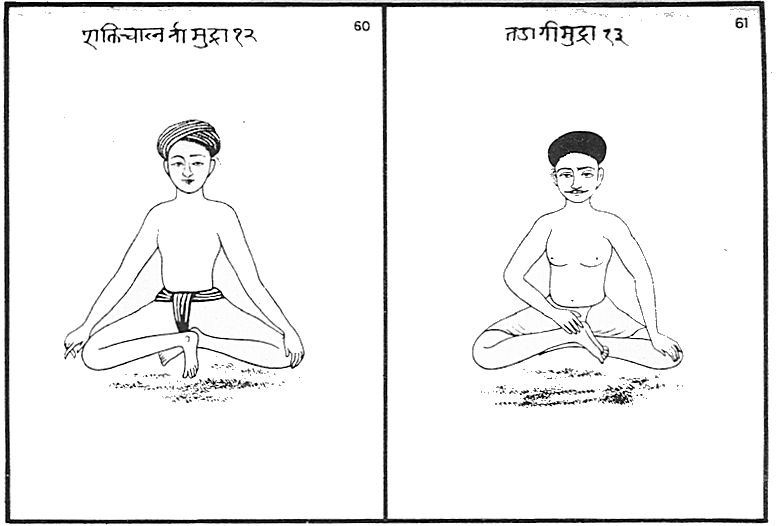
Rakticālanīmudrā, Taḍāgīmudrā
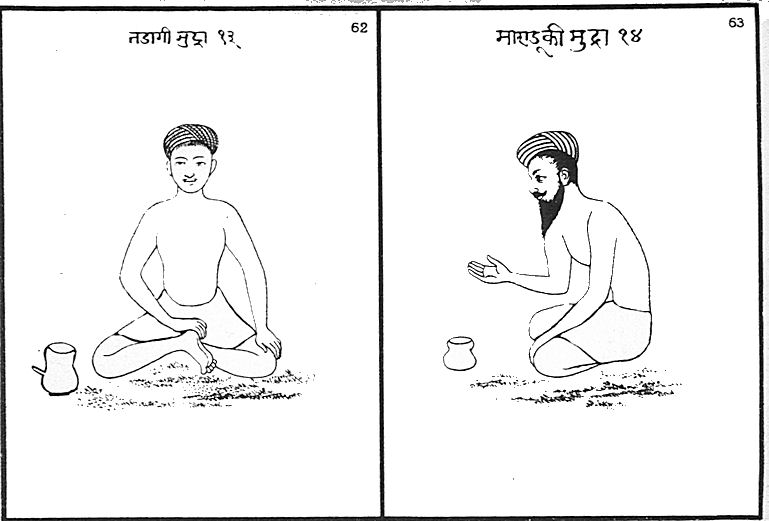
Taḍāgīmudrā, Māṇḍukīmudrā
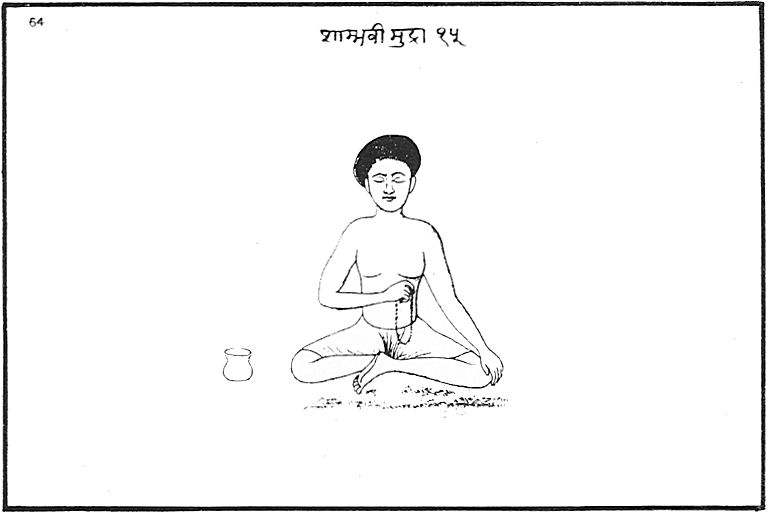
Śāmbhavīmudrā
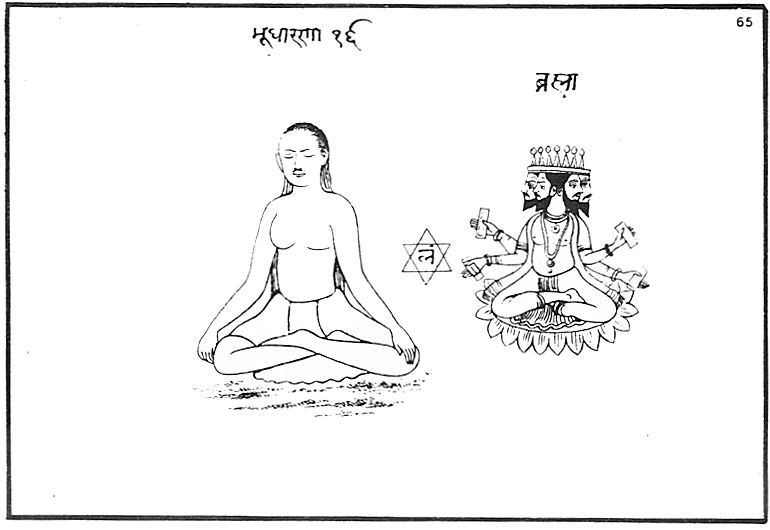
Bhūdhāraṇā, Brahmā
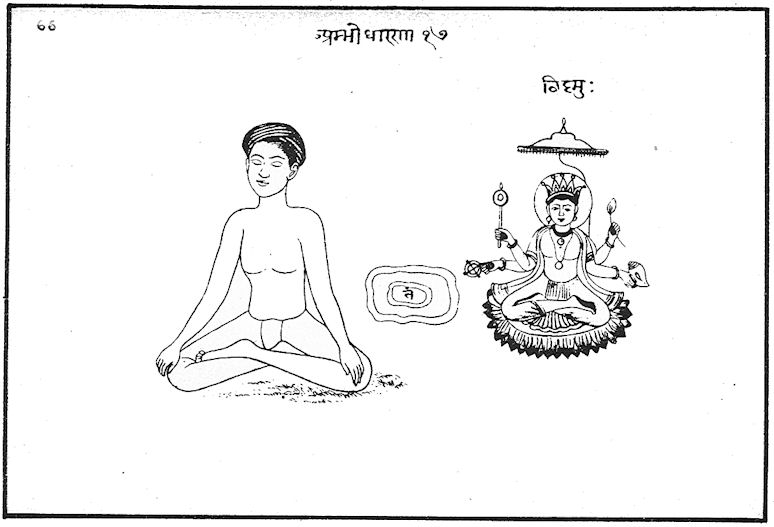
Ambhodhāraṇā, Viṣṇu
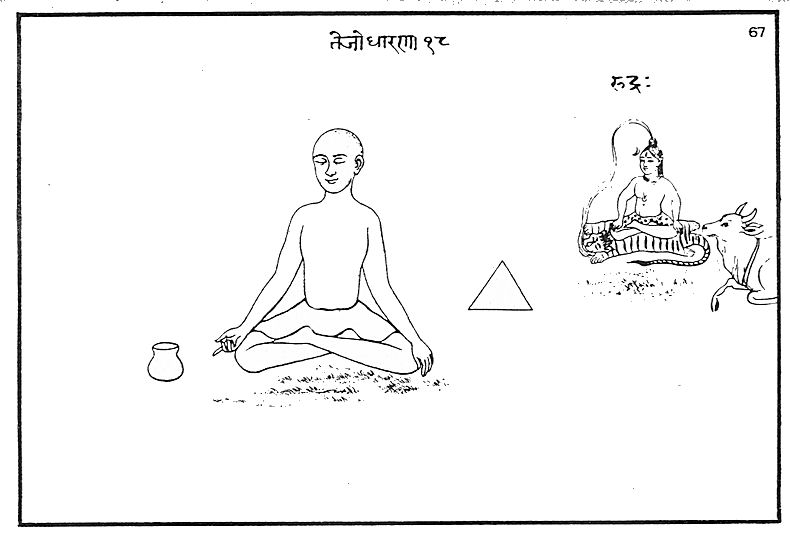
Tejodhāraṇā, Rudra
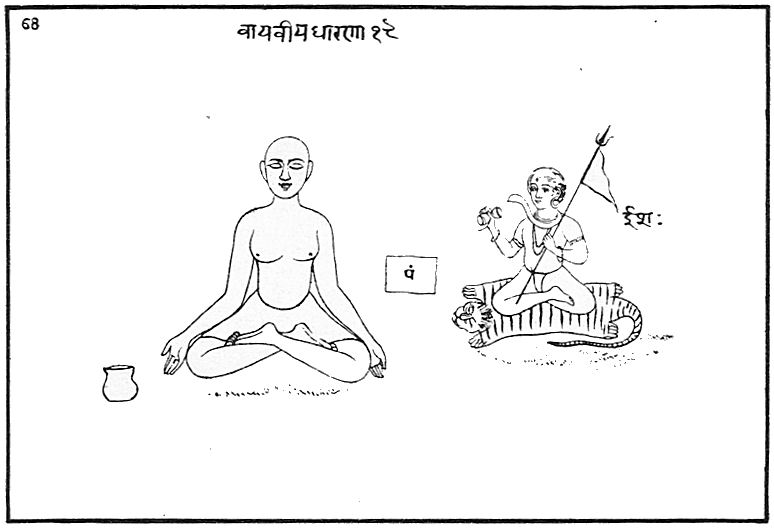
Vāyavīyadhāraṇā, Īśa
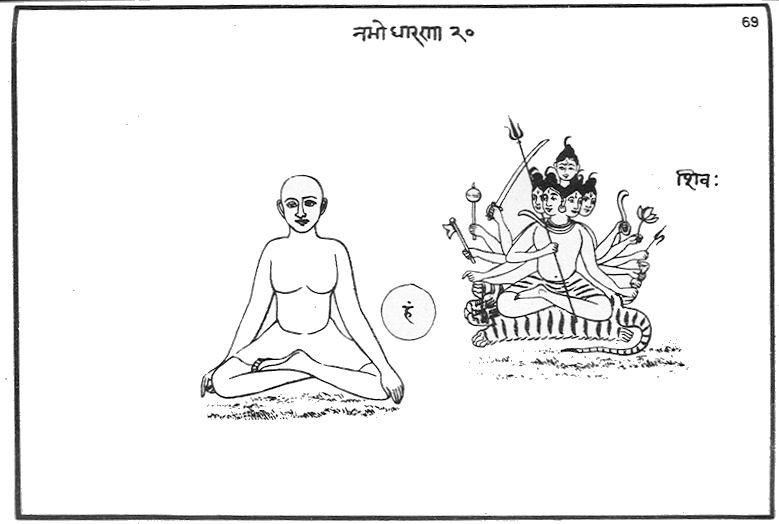
Nabhodhāraṇā, Śiva
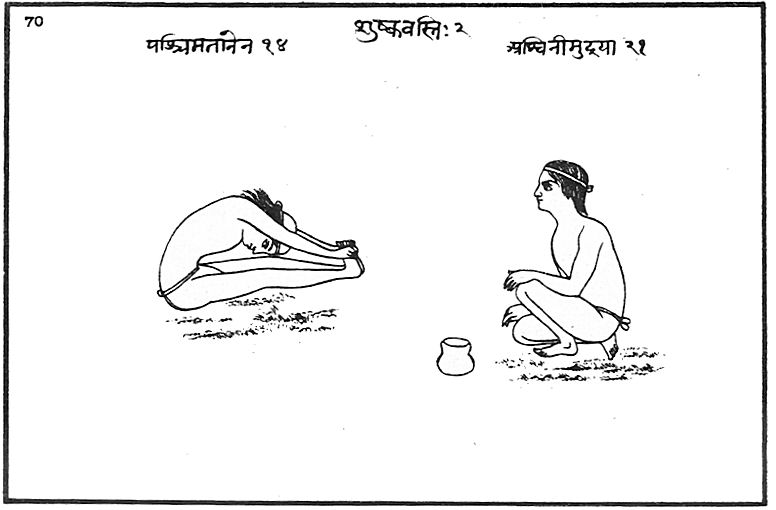
Śuṣkavasti
Paścimatānena, Aśvinīmudrayā
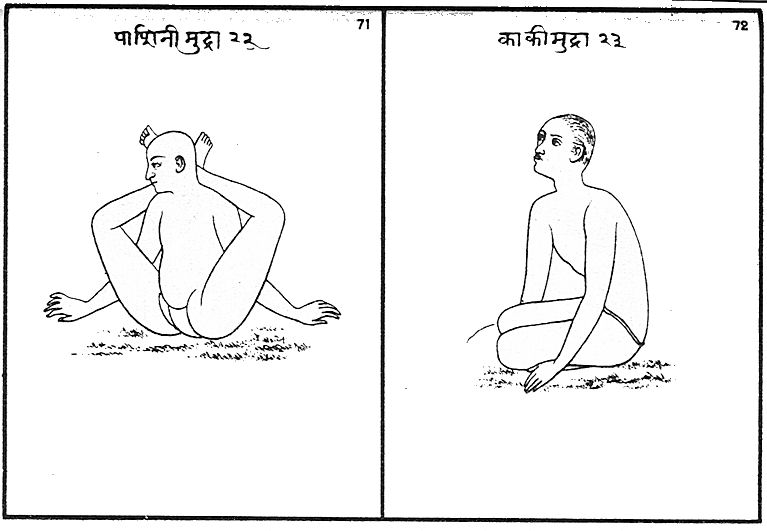
Pāśinīmudrā, Kākīmudrā
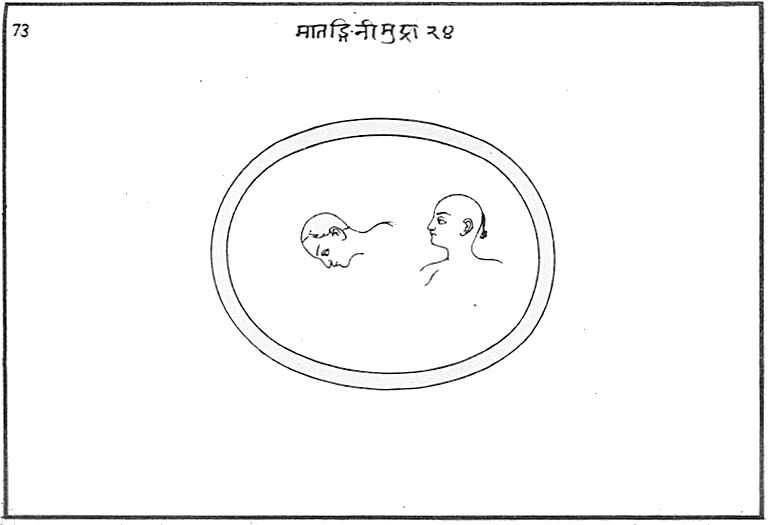
Mātaṅginīmudrā
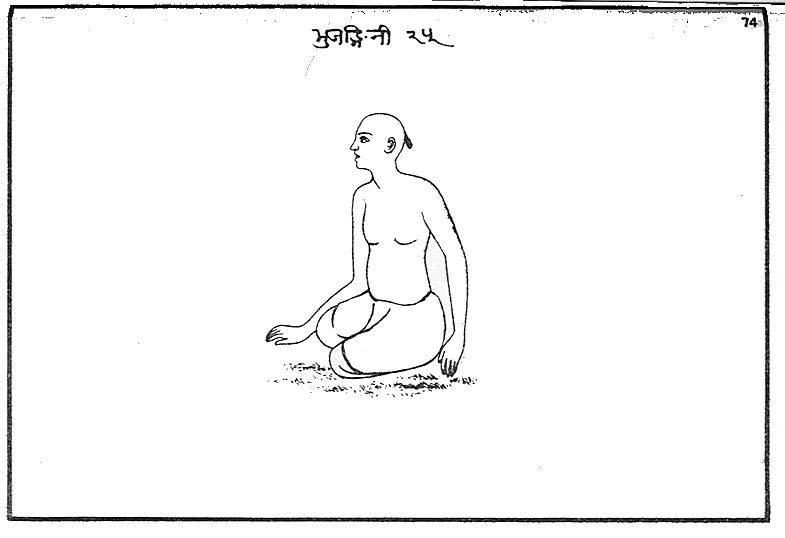
Bhujaṅginī
Zu: 3. Zum Beispiel: "Tom Raw, the Griffin", 1828